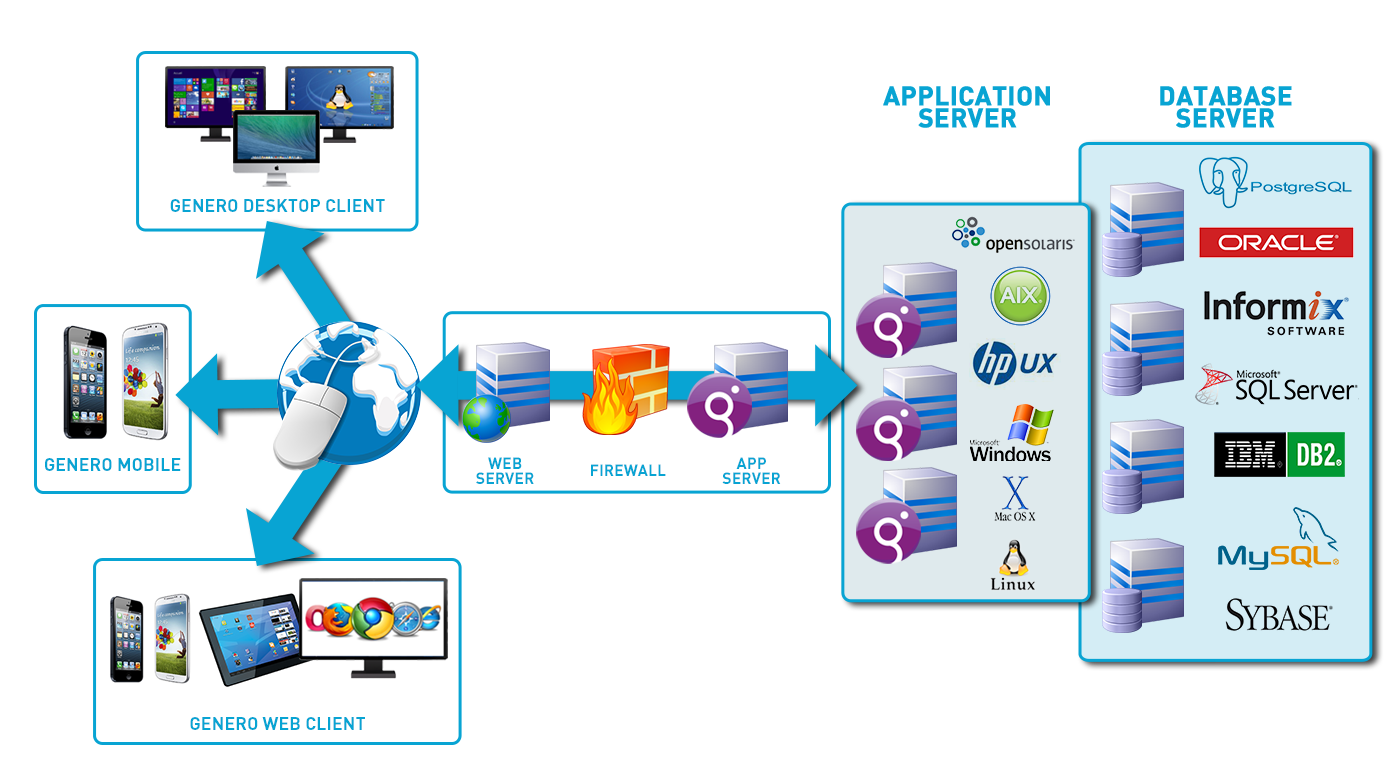Discover How Scalable Data Sources Can Be Utilized Without Coding to Boost Your Company Procedures
In today's hectic company setting, the ability to handle and analyze data effectively is extremely important. Scalable databases, specifically when coupled with no-code options, supply a transformative approach that empowers non-technical users to enhance procedures. By employing tools that require no coding expertise, organizations can improve their functional capabilities while lessening reliance on IT sources. The actual question lies in recognizing exactly how these remedies can be customized to specific business needs and what potential obstacles may develop in their execution. Discovering these facets can brighten the path to operational excellence.
Recognizing Scalable Databases
Scalable databases are important for contemporary organization operations, enabling companies to successfully handle boosting quantities of data without sacrificing performance. These data sources are developed to adjust and expand to the changing demands of a business, guaranteeing that they can manage bigger datasets and even more intricate queries as business demands advance.
Understanding scalable databases includes acknowledging their two main types: vertical scaling and horizontal scaling. Vertical scaling, or "scaling up," includes adding even more power (CPU, RAM) to an existing web server to boost performance. Conversely, horizontal scaling, or "scaling out," requires including extra web servers to disperse the lots, which usually results in greater flexibility and fault tolerance.
An additional critical aspect is the architecture of scalable databases, which can be either relational or non-relational. Relational databases, such as MySQL and PostgreSQL, are structured and make use of SQL for questions, while non-relational databases, like MongoDB and Cassandra, provide more flexibility with disorganized information.
Eventually, recognizing scalable data sources is essential for organizations intending to take advantage of data as a strategic property, allowing them to remain competitive in a progressively data-driven atmosphere.

Advantages of No-Code Solutions
Unlocking the possibility of no-code solutions equips organizations to improve operations and boost productivity without the requirement for considerable programming understanding. These systems enable non-technical users to create, customize, and handle data sources easily, hence democratizing access to innovation throughout groups.
Among the primary advantages of no-code services is their rate of execution. Organizations can quickly deploy applications and automate processes, dramatically decreasing the time invested in advancement cycles. This agility allows organizations to respond immediately to market modifications and client demands, cultivating an affordable side.
In addition, no-code systems minimize dependence on IT divisions for daily tasks, enabling technical teams to focus on even more intricate tasks that need specialized abilities. This shift not only optimizes resource allocation yet additionally advertises advancement within the company.
Cost-effectiveness is one more advantage, as no-code solutions can reduce advancement and maintenance expenses. By minimizing the demand for coding knowledge, companies can harness the capabilities of their existing labor force without the expenses of employing additional employees.
Popular No-Code Data Source Tools
The rise of no-code services has actually resulted in the appearance of numerous database tools that satisfy businesses looking for efficiency and availability. These tools encourage individuals with limited technological know-how to produce, manage, and adjust databases flawlessly.
Caspio sticks out for its capability to construct internet applications without any kind of coding. It enables services to create robust data sources and deploy applications rapidly, dealing with numerous market requirements. Propensity offers user-friendly user interfaces and powerful information management capabilities, enabling organizations to build custom-made applications tailored to their workflows.

Usage Cases in Business Operations
How can businesses leverage data source devices to boost their procedures? Scalable data sources supply organizations with powerful capabilities to take care of and assess information without the requirement for substantial coding understanding. These tools can streamline numerous organization processes, eventually causing enhanced efficiency and productivity.
One prominent usage situation is client connection monitoring (CRM) Organizations can make use of scalable databases to track consumer communications, choices, and responses, making it possible for individualized communication and far better service. By centralizing this details, groups can work together better and react to customer demands in real-time.
An additional considerable application is inventory monitoring. Companies can use no-code database devices to keep an eye on stock degrees, track shipments, and projection demand. This ensures ideal inventory levels, minimizes waste, and minimizes stockouts.
In addition, job monitoring can gain from scalable data sources by allowing groups to handle jobs, due dates, and sources in a combined system. With real-time updates and information visualization, project supervisors can make informed choices.
Beginning With Application
Implementing scalable databases in business procedures requires an organized approach to make certain successful assimilation and use. The go right here primary step is to carry out an extensive demands analysis, identifying particular service requirements, data types, and anticipated development patterns. This fundamental understanding will certainly guide the option of the suitable database service.
Following, pick an user-friendly, no-code database platform that aligns with your operational goals. no-code. Numerous contemporary options use instinctive interfaces, enabling non-technical individuals to handle data properly. After picking a system, develop a clear information architecture that describes how data will be arranged, accessed, and kept
Training is critical; ensure that employee are geared up with the required skills to utilize the data source. Take into consideration providing workshops or tutorials to acquaint team with the system's performances.
Final Thought
In conclusion, the integration of scalable databases via no-code options presents substantial benefits for business procedures. Ultimately, leveraging these innovations can lead to boosted performance and operational performance, positioning companies for continual development in an affordable landscape.
One popular no-code data source tool is Airtable, which integrates the capability of a spreadsheet with the power of a data source.Exactly how can businesses leverage database tools to enhance their procedures? Companies can make use of scalable data sources to track client communications, choices, and comments, enabling tailored interaction and much better solution.Carrying out scalable data sources in company operations needs an organized method to guarantee effective assimilation and use.In conclusion, the combination of scalable data sources with no-code options offers considerable advantages for service procedures.